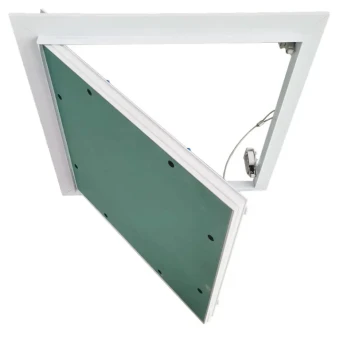- Afrikaans
- Albanian
- Amharic
- Arabic
- Armenian
- Azerbaijani
- Basque
- Belarusian
- Bengali
- Bosnian
- Bulgarian
- Catalan
- Cebuano
- Corsican
- Croatian
- Czech
- Danish
- Dutch
- English
- Esperanto
- Estonian
- French
- German
- Greek
- Hindi
- Indonesian
- irish
- Italian
- Japanese
- Korean
- Lao
- Malay
- Myanmar
- Norwegian
- Norwegian
- Polish
- Portuguese
- Romanian
- Russian
- Serbian
- Spanish
- Swedish
- Thai
- Turkish
- Ukrainian
- Uzbek
- Vietnamese
gru . 11, 2024 10:44 Back to list
Access Panels for Plasterboard Ceilings Installation and Maintenance Tips and Benefits
Understanding Plasterboard Ceiling Access Panels
Plasterboard ceiling access panels are essential features in modern building design, providing a practical solution for accessing concealed spaces above the ceiling. These panels, often made from gypsum plasterboard or similar materials, are designed to blend seamlessly with the surrounding ceiling, allowing for both aesthetic appeal and functionality.
What Are Plasterboard Ceiling Access Panels?
Plasterboard ceiling access panels are specially designed openings in a plasterboard (or drywall) ceiling that allow access to the space above for maintenance, inspection, or installation of electrical, plumbing, or HVAC systems. These panels are typically framed with a sturdy material that can accommodate the weight of the plasterboard and ensure durability.
The main advantage of these access panels lies in their ability to provide a tidy and efficient way to reach areas that would otherwise be difficult to access. This includes voids above ceilings where important infrastructure resides, such as wiring, piping, or air ducts, enabling quick maintenance without the need to remove large sections of the ceiling.
Types and Features
Plasterboard ceiling access panels come in various shapes, sizes, and designs to suit different needs. Some of the most common types include
1. Flush Ceiling Access Panels These panels are designed to sit flush with the ceiling, making them virtually invisible when closed. This design is particularly popular in residential and commercial spaces where aesthetics are a priority.
2. Hinged Access Panels These panels come with hinges that allow them to swing open, making access easy. They are often used in locations where frequent access is required.
3. Lift-Out Panels Lift-out panels can be removed completely from their frames, providing wide access to the space above. These are often used in larger areas or where extensive work may be needed in the ceiling void.
4. Fire-Rated Access Panels For buildings that require additional safety measures, fire-rated access panels are available. These panels are designed to withstand high temperatures and prevent the spread of fire, complying with building regulations.
plasterboard ceiling access panels

Installation Considerations
The installation of plasterboard ceiling access panels is a crucial step that requires careful planning. Professional installation is often recommended to ensure structural integrity and aesthetics. Here are some important factors to consider during installation
- Location Determine the best location for the access panel based on the areas that require frequent access. This could be above HVAC units, plumbing fixtures, or electrical junctions.
- Size Choose the appropriate size for the access panel. It should be large enough to provide a comfortable working space without compromising the strength of the ceiling.
- Finishing After installation, the panel can be finished with plaster or paint to match the surrounding ceiling, creating a seamless look. Proper finishing ensures that the panel remains unobtrusive.
Maintenance and Usage
Maintenance of plasterboard ceiling access panels is generally minimal, but it is advisable to periodically check that the mechanisms (such as hinges) are functioning correctly. If the panel is painted, the finish may need to be refreshed over time to maintain aesthetic continuity.
Access panels should be used with care to ensure they last a long time. Avoid overloading any panels with weight, especially those that are not designed to bear heavy loads. In case of wear and tear or damage, it is important to repair or replace the panels promptly to maintain safety and functionality.
Conclusion
Plasterboard ceiling access panels are crucial components in both residential and commercial infrastructure. They blend functionality with aesthetics, providing access to essential systems while maintaining the overall design of the space. When installed and maintained correctly, these panels serve as a reliable solution for ongoing maintenance and inspection needs, making them an invaluable element in modern construction. By understanding their significance and types, homeowners and builders can make informed decisions when incorporating access panels into their projects.
-
Transform Interiors with PVC Gypsum Ceiling: A Stylish, Durable, and Moisture-Resistant SolutionNewsMay.19,2025
-
The Smart Interior Upgrade: Discover the Durability and Versatility of Gypsum Ceiling Access Panel SolutionsNewsMay.19,2025
-
The Smart Choice for Interior Design: Discover the Value of PVC Gypsum Ceiling SolutionsNewsMay.19,2025
-
Mineral Fiber Ceiling Tiles: The Smart Blend of Performance and AestheticsNewsMay.19,2025
-
Mineral Fiber Ceiling Tiles: The Superior Choice Over Gypsum for Sound and Fire SafetyNewsMay.19,2025
-
Mineral Fiber Ceiling Tiles: Eco-Friendly Strength and Style for Every CeilingNewsMay.19,2025







